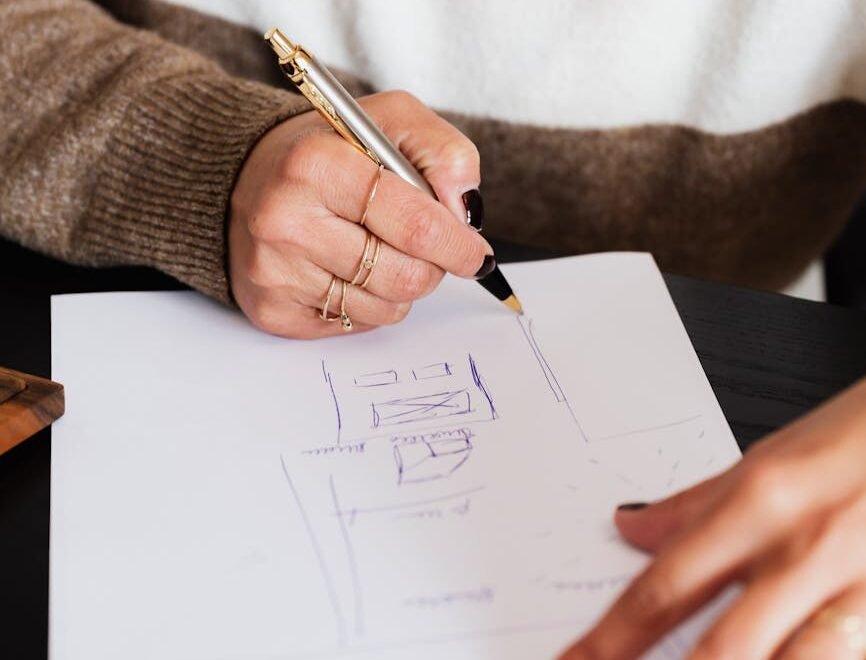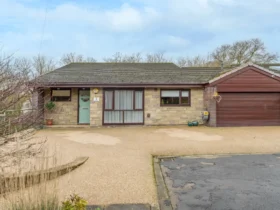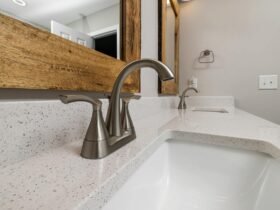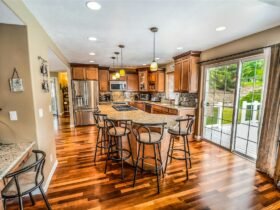Understanding Interior Designer Costs
When embarking on an interior design project, it’s important to have a clear understanding of the costs involved. By comprehending the factors that influence interior designer costs and the significance of budgeting, you can make informed decisions and ensure a successful outcome for your project.
Importance of Budgeting for Interior Design
Budgeting plays a vital role in the interior design process. It allows you to establish realistic financial boundaries and ensures that the project stays on track. By setting a budget, you can prioritize your expenses and allocate funds to different aspects of the design, such as materials, furnishings, and professional fees.
Having a budget also enables you to communicate your financial expectations to your interior designer. This ensures that they can tailor their design recommendations and proposals to align with your budgetary constraints. By working within your budget, you can achieve a well-designed space without compromising your financial stability.
Factors Influencing Interior Designer Costs
Several factors influence the costs associated with hiring an interior designer. These factors include:
-
Experience and Expertise: Interior designers with more experience and a prestigious portfolio may command higher fees due to their expertise and reputation.
-
Project Complexity: The complexity of the project, such as the size of the space, the level of customization required, and the intricacy of design elements, can impact the overall cost.
-
Location: The location of the project can also affect interior designer costs. Areas with a higher cost of living or where interior design services are in high demand may have higher fees.
-
Scope of Work: The scope of work required for the project directly influences the cost. A simple consultation or design concept may be more affordable than a full-scale design project that includes project management and implementation.
-
Timeline: Urgent or time-sensitive projects may incur additional costs to accommodate expedited work schedules or overtime.
By considering these factors, you can better understand how interior designer costs are determined and make informed decisions when selecting a professional for your project.
To find the right interior designer for your budget, it’s important to conduct thorough research, compare designers, and communicate openly about your financial expectations. Check out our article on interior designer near me for tips on finding local designers. By negotiating fees and contracts and ensuring clear communication, you can work towards a mutually beneficial agreement that meets both your design needs and budgetary requirements.
Types of Fee Structures
When it comes to interior design services, there are different fee structures that interior designers may use to charge for their services. Understanding these fee structures can help you navigate the costs associated with hiring an interior designer. Here are three common types of fee structures:
Hourly Rates
One of the most common fee structures used by interior designers is hourly rates. With this structure, the designer charges an hourly fee for the time spent working on your project. The hourly rate can vary depending on factors such as the designer’s experience, location, and the complexity of the project.
Hourly rates are often used for smaller projects or when the scope of work is uncertain. This fee structure provides flexibility as you are billed for the actual time spent on your project. However, it’s important to keep in mind that the total cost can vary depending on the number of hours required to complete the project.
Flat Fees
Another fee structure used by interior designers is flat fees. With this structure, the designer charges a fixed fee for the entire project, regardless of the number of hours spent. The flat fee is determined based on factors such as the size and complexity of the project, the designer’s expertise, and the estimated time and resources required.
Flat fees provide clarity and predictability in terms of costs, as you know upfront how much you will be charged for the project. This fee structure is commonly used for larger projects where the scope of work is well-defined. However, it’s important to have a clear understanding of what is included in the flat fee and whether additional costs might arise for specific items or services.
Percentage of Project Costs
The percentage of project costs fee structure is based on a percentage of the total project budget. The interior designer charges a predetermined percentage, typically ranging from 10% to 30%, of the total cost of the project. This fee structure is commonly used for larger projects where the budget is significant.
Charging a percentage of project costs aligns the designer’s fee with the overall project value. As the project budget increases, the fee also increases proportionally. However, it’s important to discuss and agree upon the scope of work and any additional costs that may arise during the project. This fee structure requires transparency and communication to ensure that both parties have a clear understanding of the financial implications.
| Fee Structure | Description | Pros | Cons |
|---|---|---|---|
| Hourly Rates | Charges based on the number of hours worked | Provides flexibility, suitable for smaller projects or uncertain scope | Total cost may vary depending on hours required |
| Flat Fees | Charges a fixed fee for the entire project | Clarity and predictability in terms of costs | Additional costs may arise for specific items or services |
| Percentage of Project Costs | Charges a percentage of the total project budget | Aligns fee with project value | Requires transparency and communication for additional costs |
Understanding the different fee structures can help you make an informed decision when hiring an interior designer. Consider your budget, the scope of the project, and your specific needs to determine which fee structure works best for you. Remember to communicate your budget and expectations clearly when discussing fees with potential interior designers. For assistance in finding an interior designer near you, visit our article on interior designer near me.
Additional Costs to Consider
When budgeting for interior design services, it’s important to take into account additional costs that may arise throughout the design process. These costs can vary depending on factors such as materials and furnishings, project size and scope, as well as consultation and travel expenses.
Materials and Furnishings
One of the significant cost considerations in interior design is the selection and procurement of materials and furnishings. The choice of materials, such as flooring, countertops, and fabrics, can greatly impact the overall cost of the project. Higher-end or custom-made materials tend to come with a higher price tag, while more budget-friendly options are available for those looking to minimize costs.
Furnishings, including furniture, lighting fixtures, and decorative items, also contribute to the total cost. The style, brand, and quality of the furnishings can significantly influence the overall budget. It’s essential to communicate your budget and preferences to your interior designer, as they can help you find suitable options that align with your financial goals.
Project Size and Scope
The size and scope of your interior design project play a crucial role in determining the overall cost. Larger projects, such as whole-house renovations or commercial spaces, generally require more labor, time, and resources, resulting in higher costs. Conversely, smaller projects, like revamping a single room or a specific area, tend to be more budget-friendly.
The complexity of the design and the level of customization required can also impact the cost. Intricate designs, unique architectural features, or specialized installations may require the expertise of additional professionals or specialized trades, adding to the overall expenses. It’s important to discuss the scope of your project with your interior designer to get a clear understanding of the expected costs.
Consultation and Travel Expenses
Interior design projects often require meetings, consultations, and site visits. These professional services may come with additional costs, particularly if the designer needs to travel to your location. Travel expenses, including transportation, accommodation, and meals, can be charged separately or included within the designer’s fee structure. It’s essential to clarify these details with your interior designer beforehand to avoid any surprises in the billing process.
Additionally, some designers may charge consultation fees for initial meetings and design concept presentations. These fees can vary depending on the designer’s experience and reputation. However, many designers offer complimentary consultations as a way to establish rapport and determine the scope of the project.
Understanding and accounting for these additional costs will help you create a realistic budget for your interior design project. By having open and transparent communication with your interior designer, you can work together to find cost-effective solutions that meet your design goals while staying within your desired budget. If you’re looking for an interior designer near you, check out our article on interior designer near me for tips on finding the right professional for your project.
How to Find the Right Interior Designer for Your Budget
When it comes to hiring an interior designer, finding the right professional who can work within your budget is essential. Here are some steps to help you find the perfect interior designer for your project while staying within your financial limits.
Researching and Comparing Designers
Start by conducting thorough research to find a list of interior designers in your area. You can use online directories, search engines, or platforms that connect clients with designers. Consider factors such as their experience, portfolio, and expertise in the type of project you have in mind (e.g., commercial interior designer, luxury interior designer, or residential interior designer).
Take the time to explore their websites, social media profiles, and online reviews to gather insights into their design style, client satisfaction, and overall reputation. Look for designers who align with your aesthetic preferences and have a history of delivering successful projects.
Once you have a shortlist of potential designers, compare their rates, fee structures, and services. Pay attention to any additional costs they may charge and make note of any unique value propositions they offer. This research will help you assess the affordability and suitability of each designer within your budget.
Communicating Your Budget and Expectations
Clear and open communication is key when working with an interior designer. Be transparent about your budget from the beginning to ensure that both parties are on the same page. Discuss your financial constraints and any specific cost limitations you have in mind.
It’s also essential to articulate your expectations regarding the project scope, timeline, and desired outcomes. By providing a comprehensive brief, you allow the interior designer to assess whether they can work within your budget and meet your requirements effectively.
During this stage, don’t hesitate to ask questions about their fee structure, payment terms, and any potential cost-saving measures they can suggest. A good interior designer will be able to provide guidance and accommodate your budget to the best of their abilities.
Negotiating Fees and Contracts
Once you’ve found an interior designer who meets your budget and design preferences, it’s time to negotiate the fees and finalize the contract. Discuss the fee structure in detail, whether it’s an hourly rate, flat fee, or a percentage of the project costs. Ensure that you have a clear understanding of what is included in the fee and if there are any additional costs you should anticipate.
Consider negotiating the terms of payment to align with your financial capabilities. Some designers may be open to flexible payment plans or phased payments based on project milestones. However, keep in mind that negotiating too aggressively may compromise the quality of the services provided.
Before signing the contract, carefully review all the terms and conditions, including the scope of work, deliverables, project timeline, and any cancellation policies. If necessary, seek legal advice to ensure you fully understand the agreement.
By following these steps, you can find an interior designer who not only matches your budget but also aligns with your design vision and delivers exceptional results. The right designer will help transform your space while ensuring a smooth and enjoyable design experience.













Got a Questions?
Find us on Socials or Contact us and we’ll get back to you as soon as possible.